|
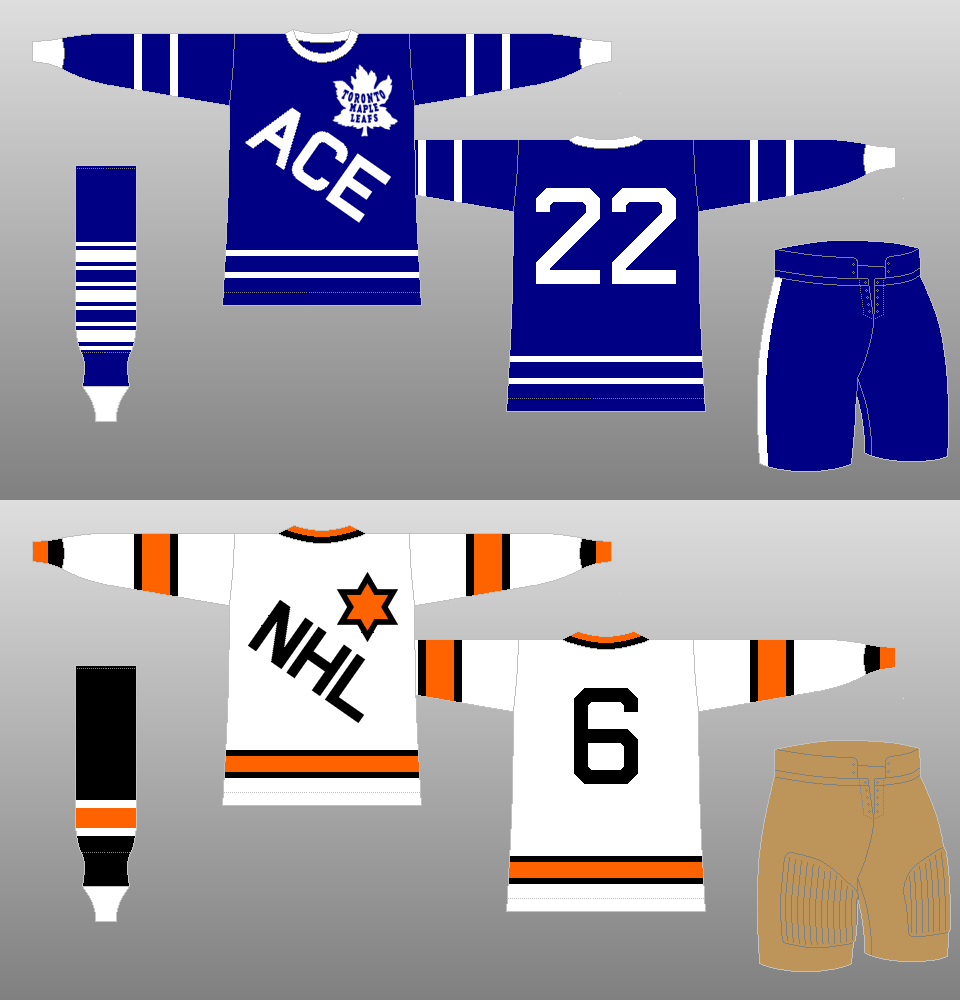 |
1934
These were worn during the Ace Bailey Benefit Game in 1934 -- the precursor to the All-Star Game. |
|
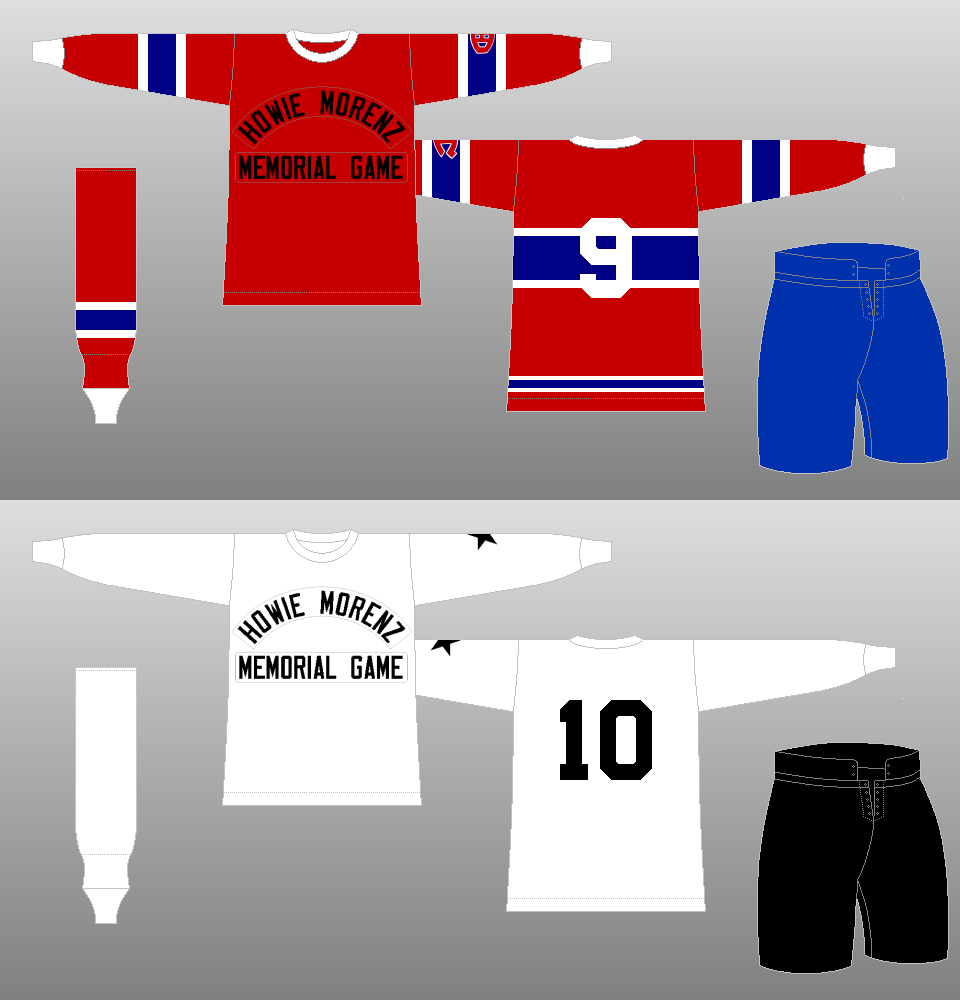 |
1937
A memorial game was played for Howie Morenz, who died from blood clots that had formed following an injury in 1937. The Canadiens wore adaptations of their home jerseys, and the NHL All-Stars wore plain white jerseys. |
|
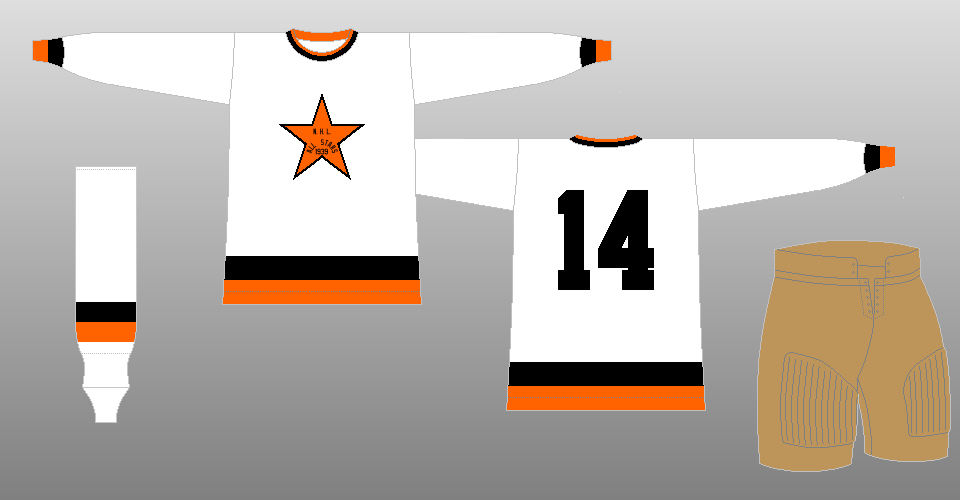 |
1939
Another memorial game is played in 1939 -- this one for Babe Siebert, who drowned prior to the season. The All-Stars played the team he was slated to coach, the Canadiens. The Canadiens wore their regular uniforms during the game. |
|
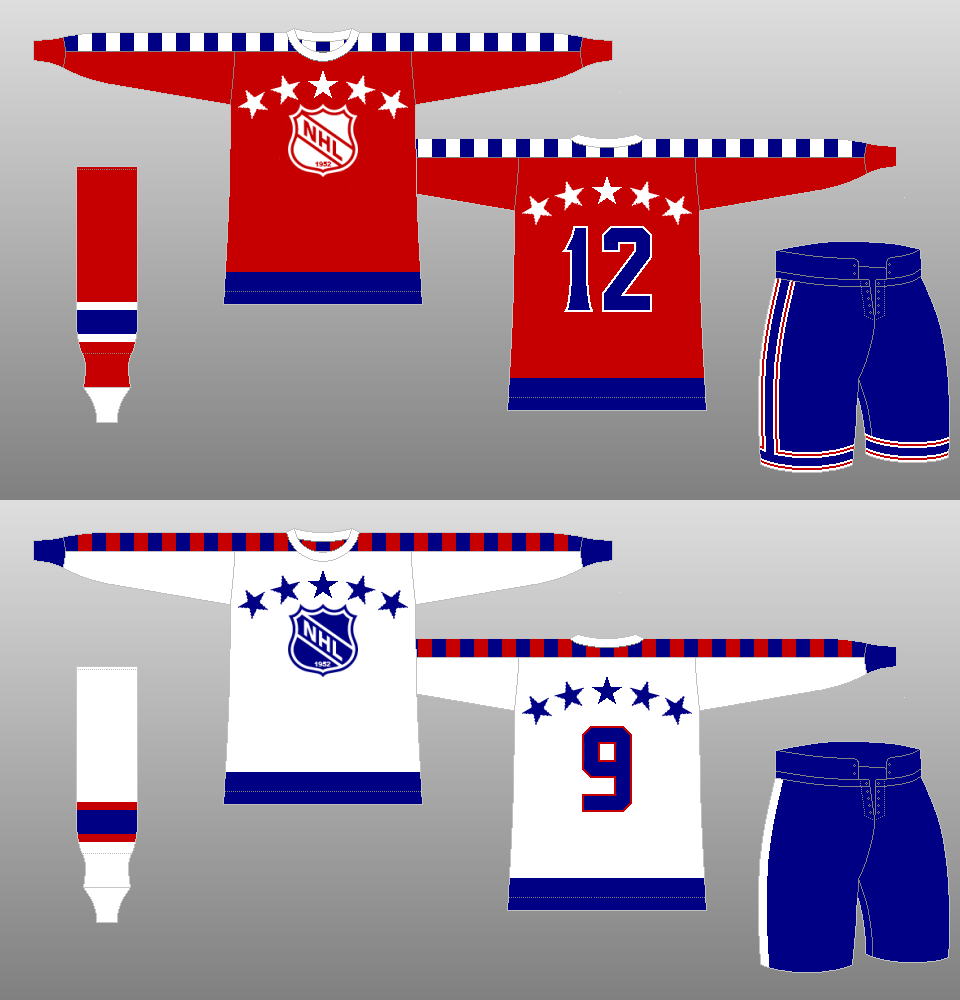 |
1947-59
The first official NHL All-Star Game was played in 1947. The year of the game appears at the bottom of the NHL crest. From 1947-51 and 1953-54, the All-Stars wore the red jerseys while the defending Stanley Cup champions wore white jerseys. With the All-Stars split into two squads in 1951 and 1952, both uniforms were worn those years. The white uniform was worn from 1955-59 with the Stanley Cup Champions wearing their colored uniforms. |
|
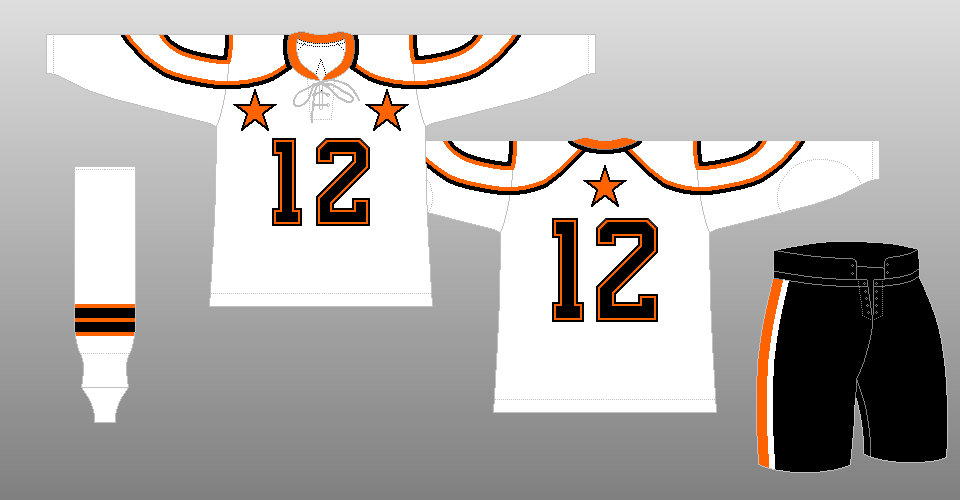 |
1960-63
The colors change to black and orange, matching those on the NHL's logo. |
|
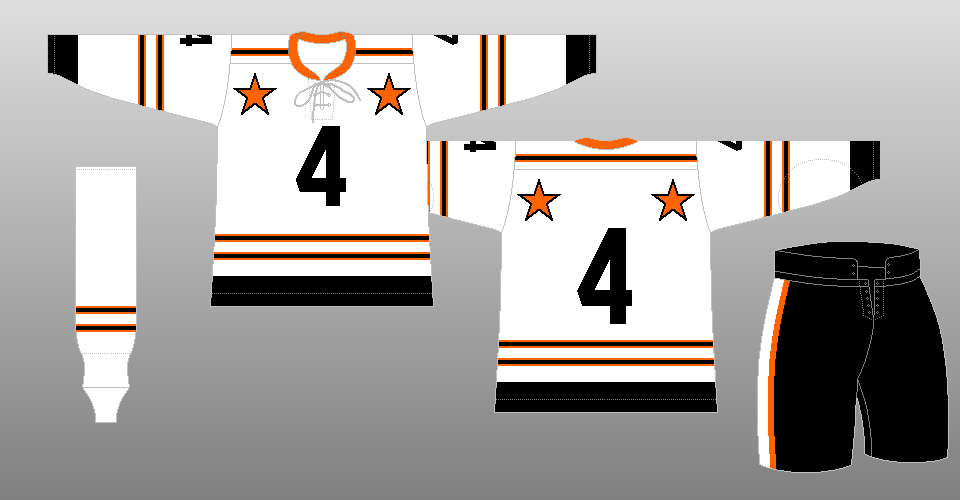 |
1964-68
The uniform is redesigned, with traditional stripes replacing the loops on the sleeves. |
|
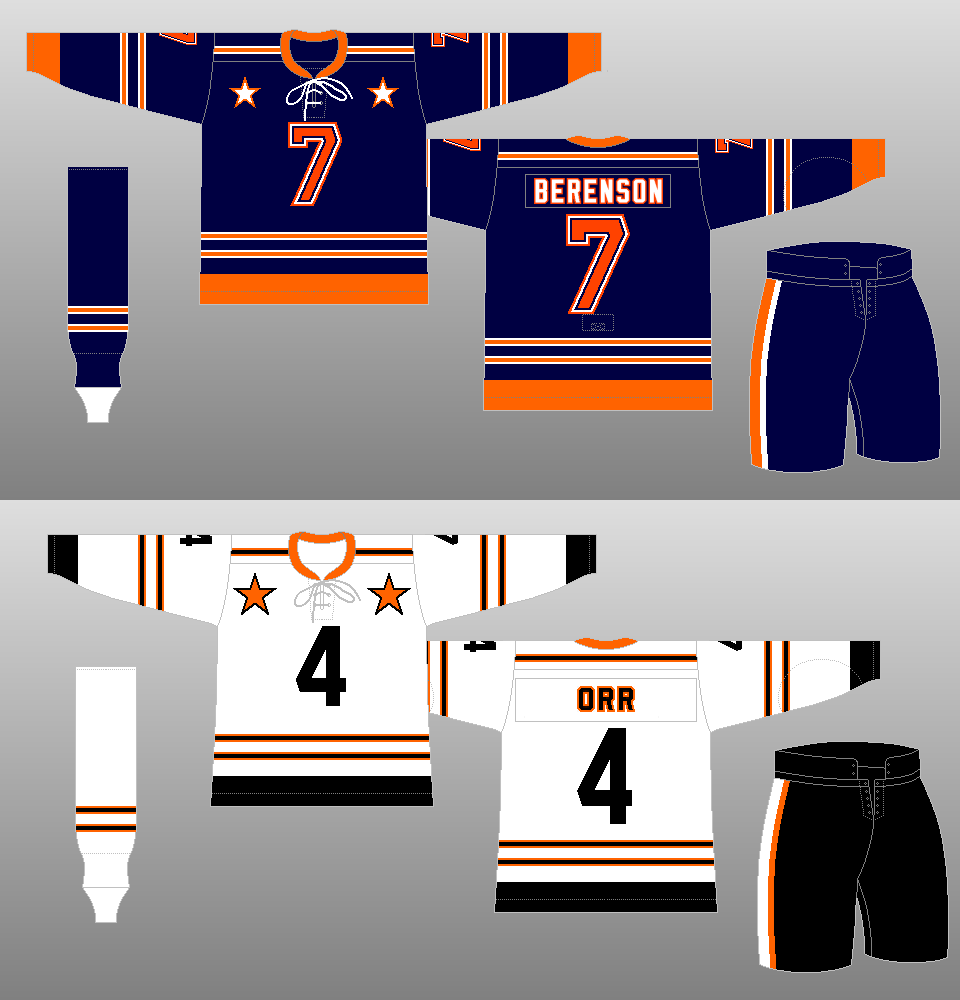 |
1969-70
Names are added to the existing white uniforms, with the nameplate covering up the stars on the back of the jersey. And a navy blue uniform is introduced for the West Division All-Stars. |
|
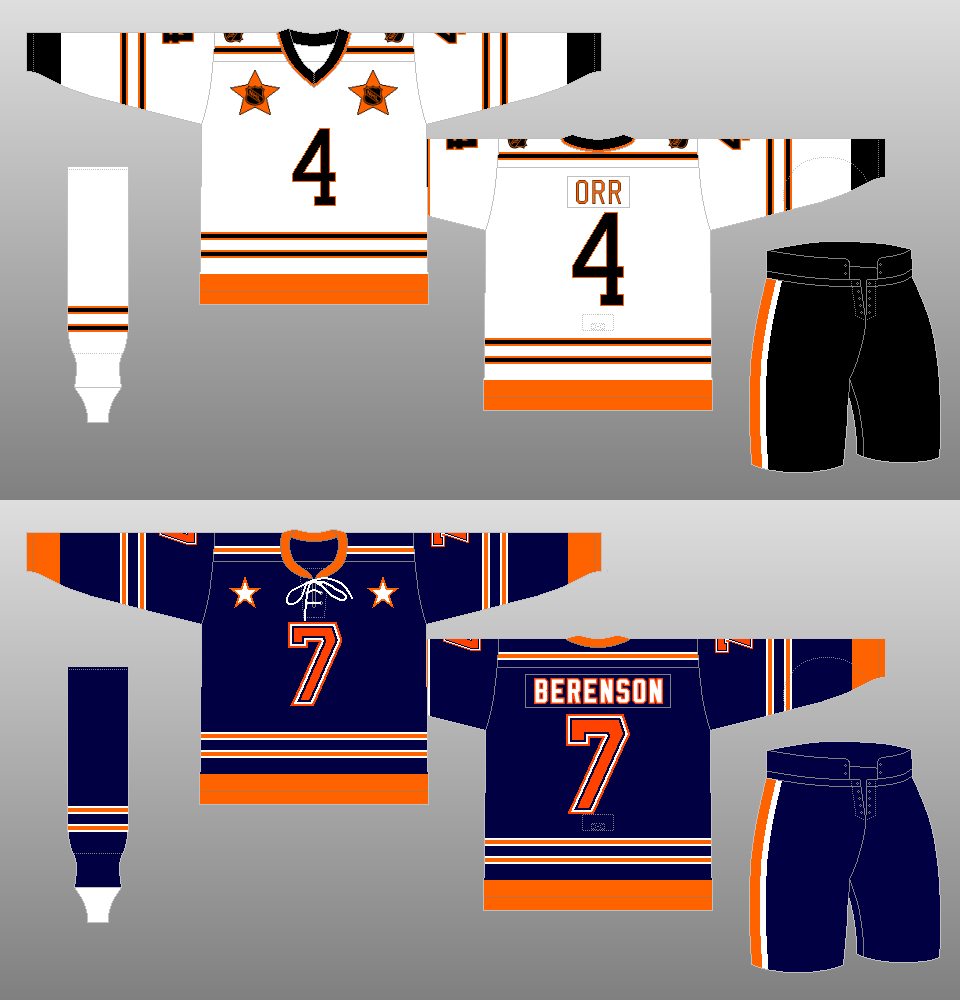 |
1971-72
The white jersey, which had been recycled from year to year since 1964, is replaced with a slightly redesigned one. |
|
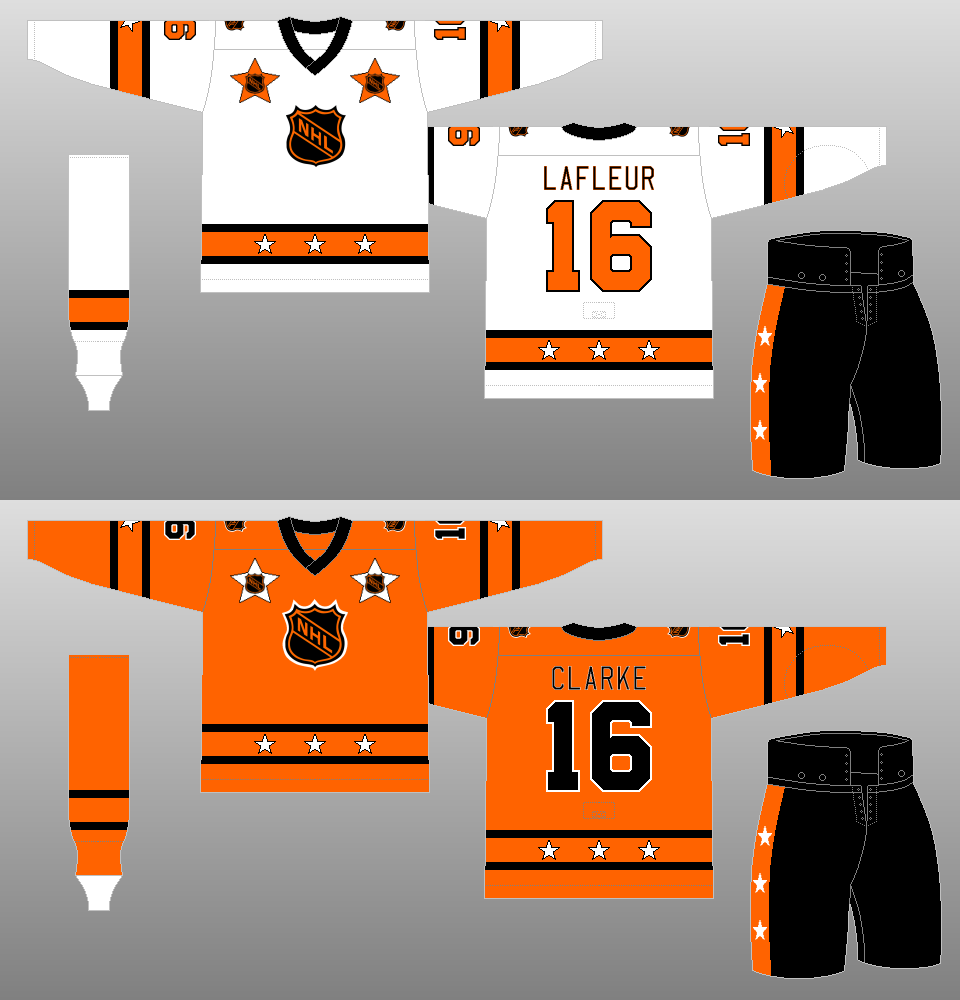 |
1973-78, 1980-81
Both uniforms are redesigned and now feature the NHL crest on the front. |
|
 |
1979
This is the uniform the NHL All-Stars wore in the 1979 Challenge Cup series against the Soviet Union national team. |
|
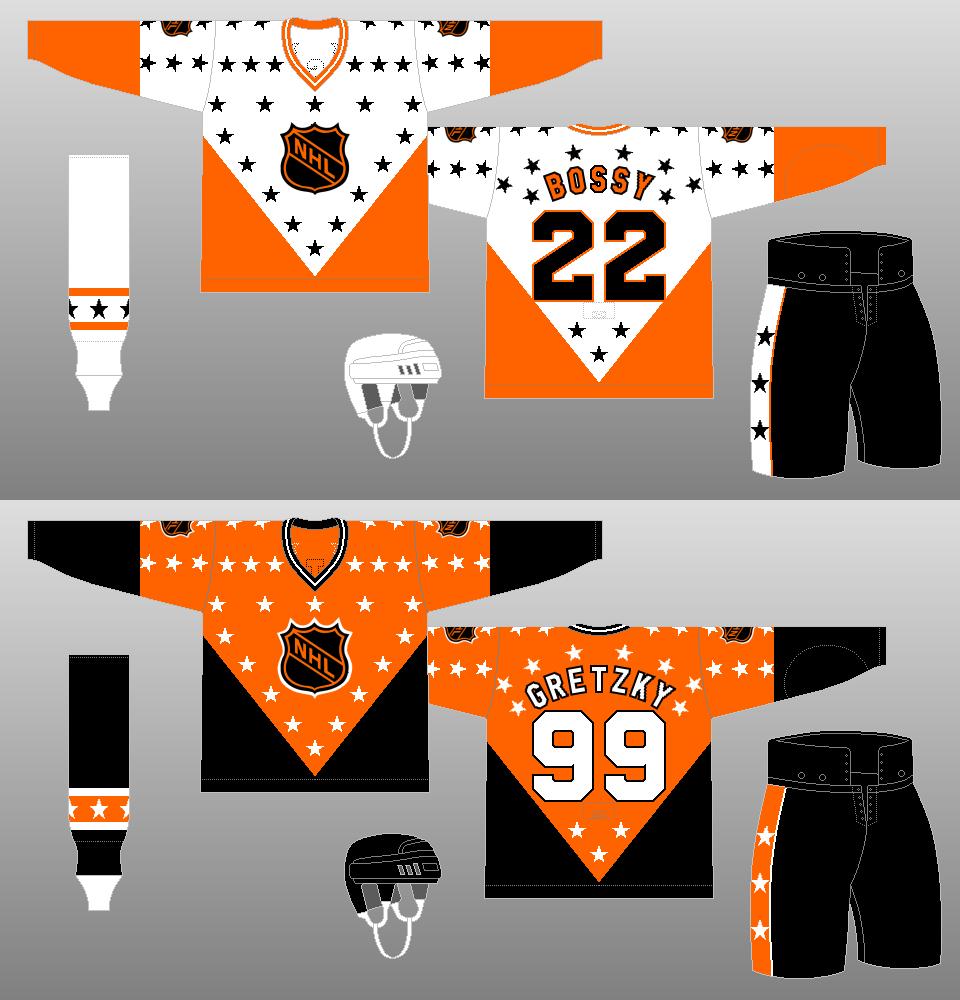 |
1982
Apparently the NHL had a huge backlog of stars and decided to put dozens of them on the All-Star Game uniforms in 1982. Note the arched names on the backs. |
|
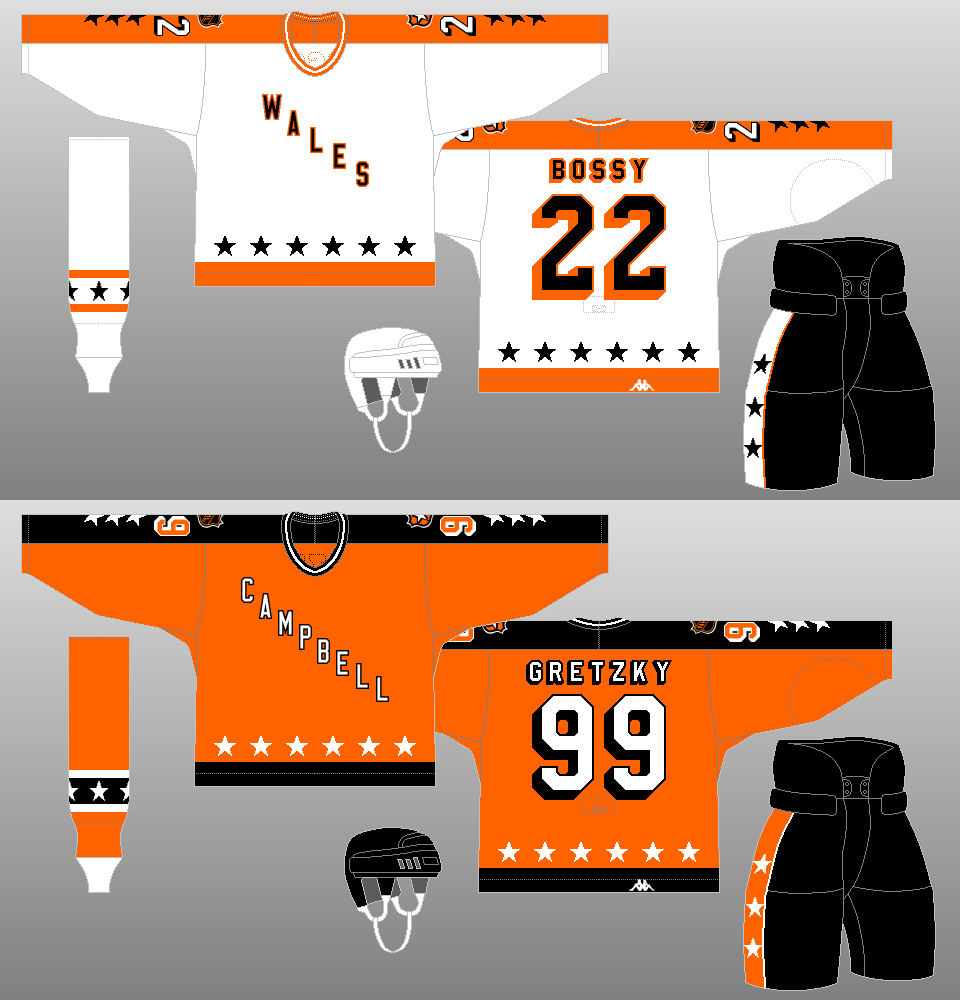 |
1983
The uniforms are toned down considerably for the 1983 All-Star Game. |
|
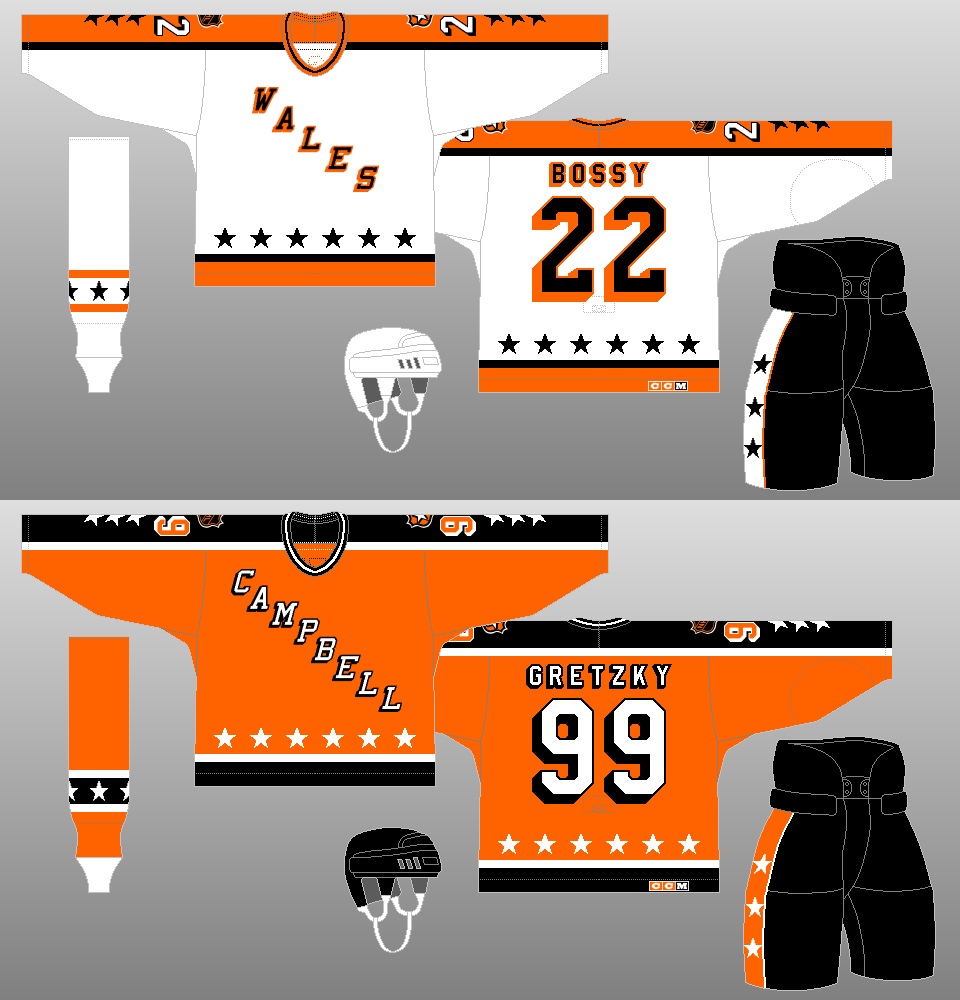 |
1984-86
The font of the front wordmarks change to that used by the New York Rangers. In 1985, the wordmarks are reversed, with the white jerseys reading CAMPBELL and the orange jersey reading WALES. |
|
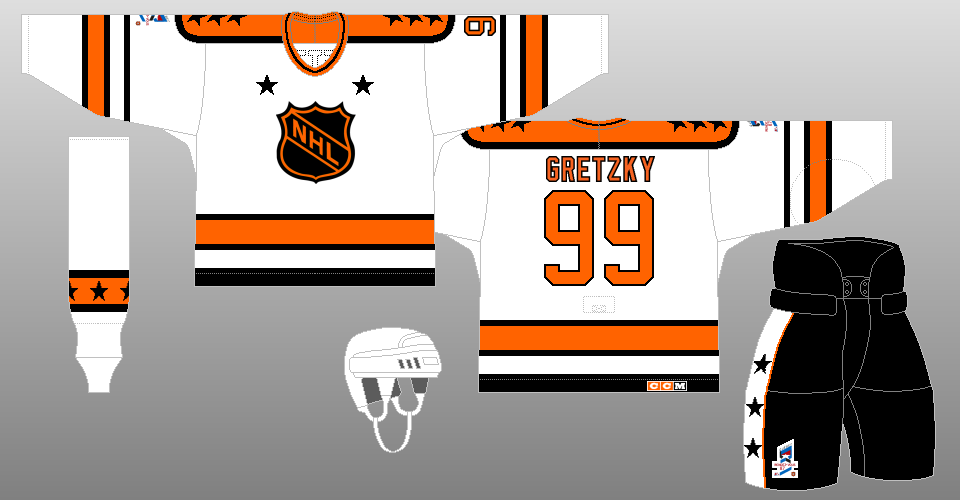 |
1987
This is what the NHL All-Stars wore during Rendez-Vous '87 against the Soviet Union national team. |
|
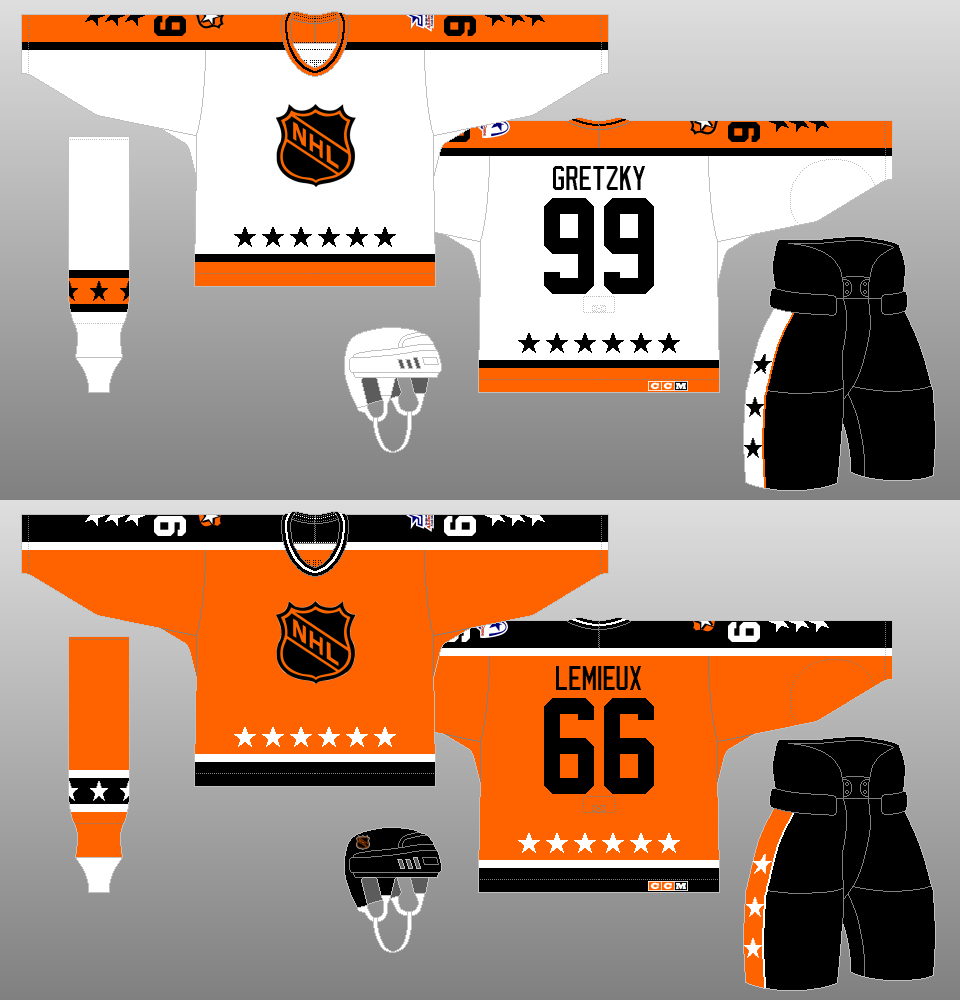 |
1988
The NHL crest returns to the front of the jerseys for the 1988 All-Star Game. |
|
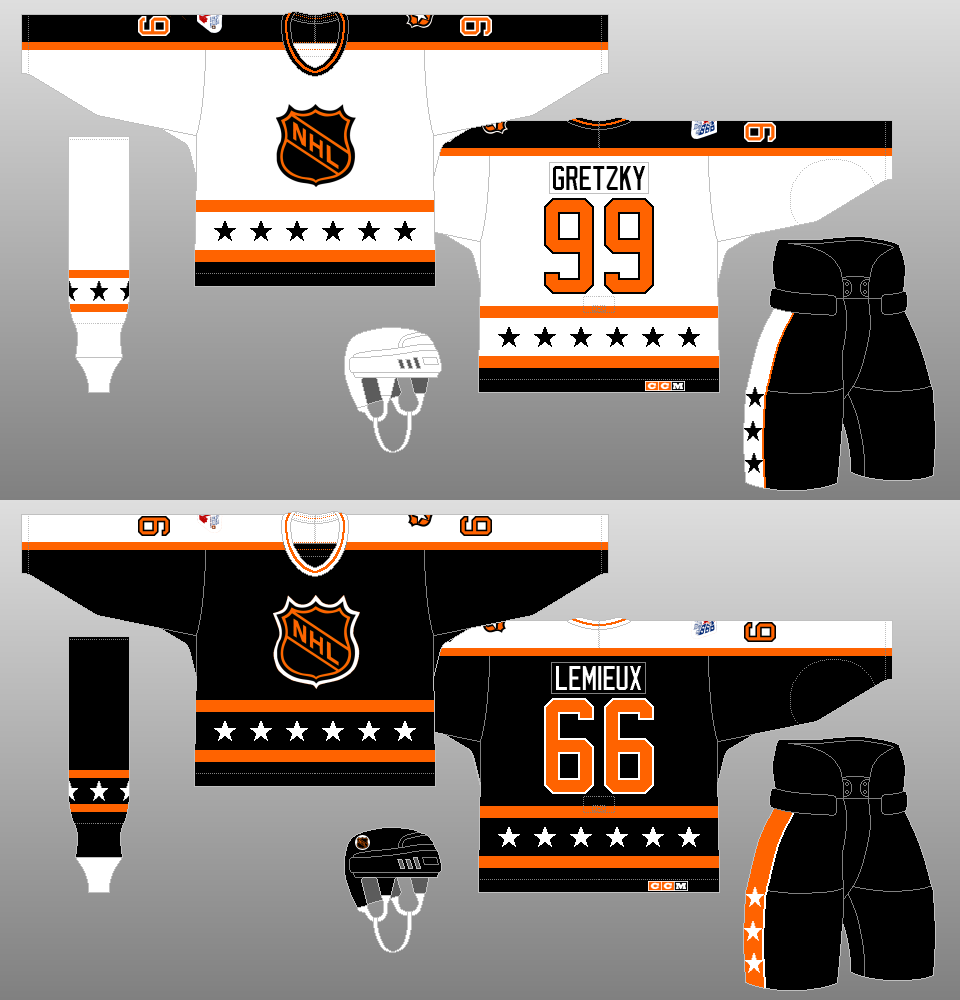 |
1989-91
The dark uniform becomes black, and both jerseys are redesigned. |
|
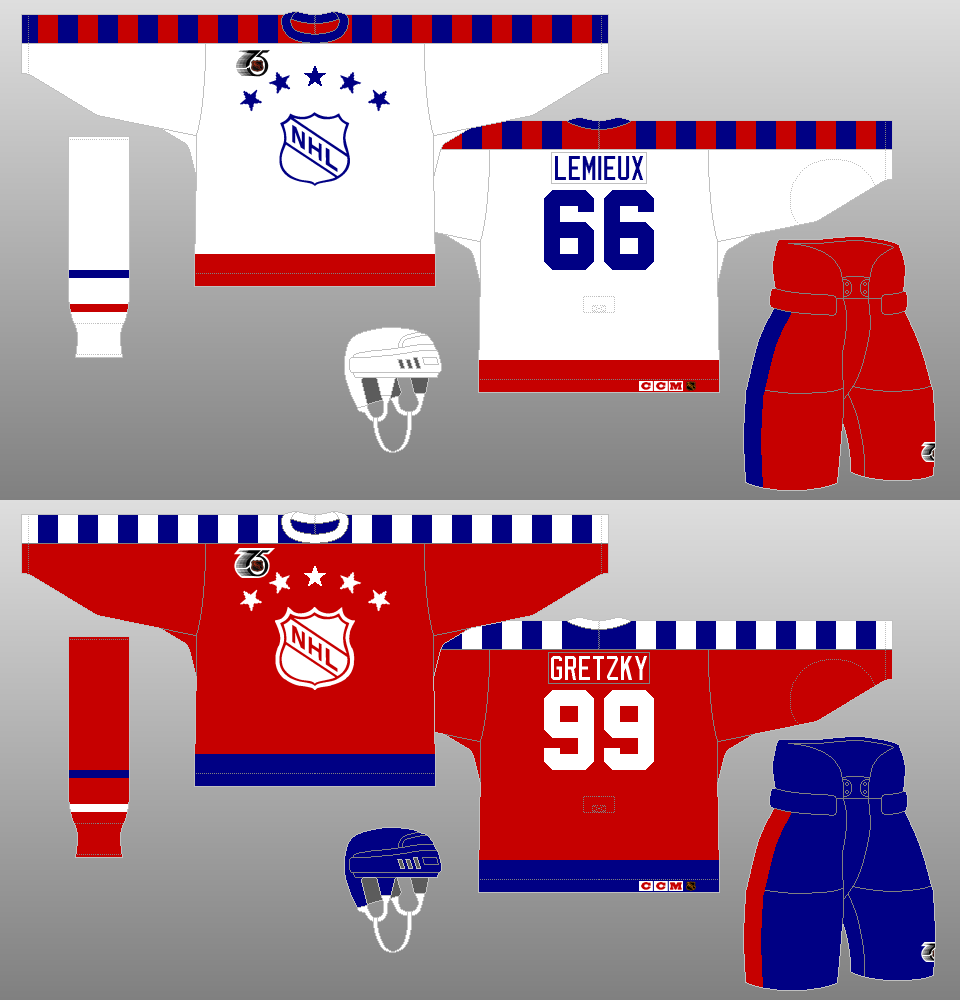 |
1992
In honor of the NHL's 75th anniversary, the All-Stars wear replicas of the original All-Star Game uniforms. |
|
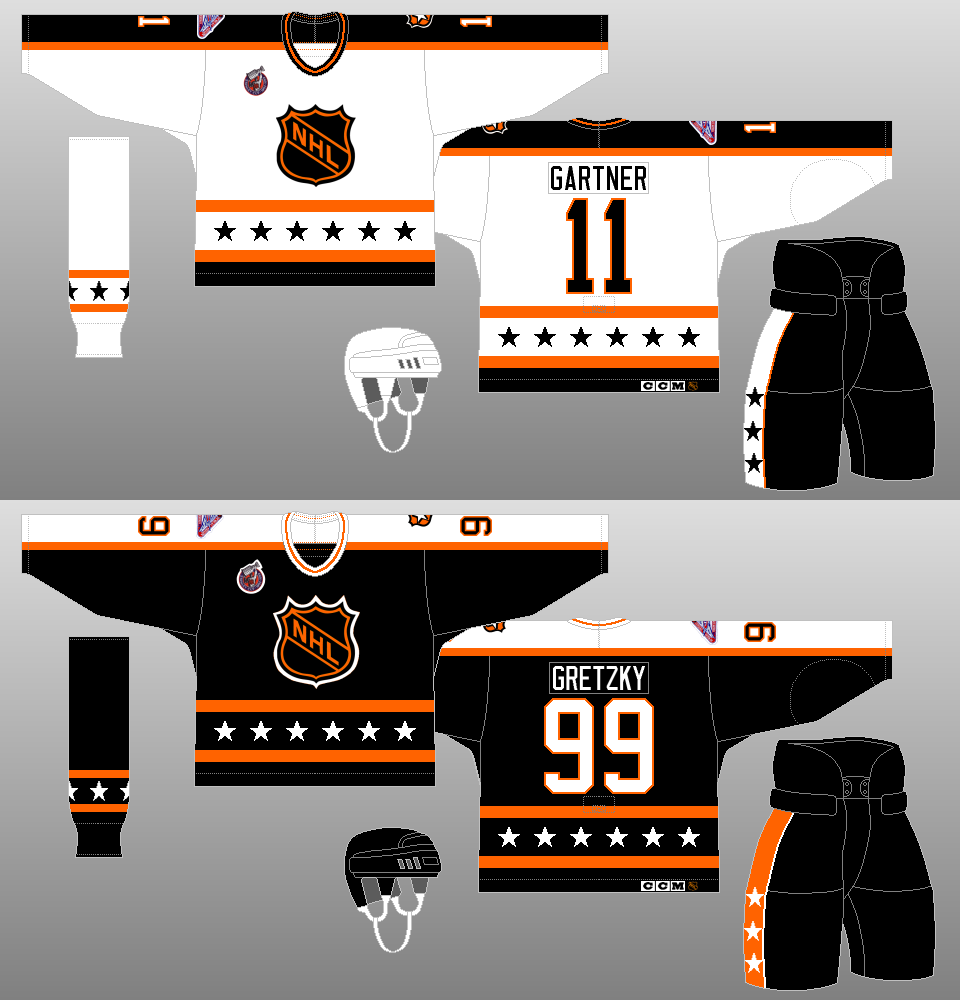 |
1993
The uniforms from 1989-91 are reinstated, with the numbers changing color -- black numbers on the white jersey and white numbers on the black jersey. |
|
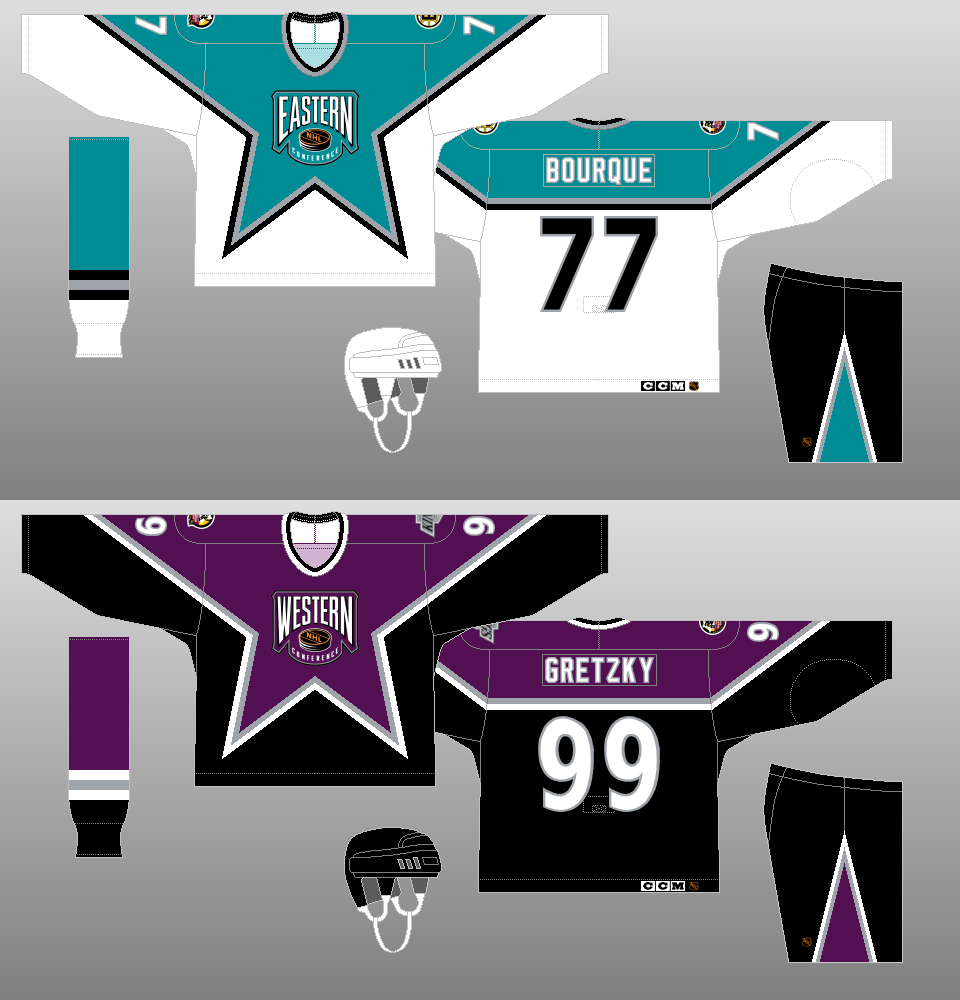 |
1994-97
The uniforms undergo a radical change in 1994, with the change in the names of the conferences. The uniforms now feature a huge star on the front -- a design that would eventually be adopted by the Dallas Stars. In 1994, the names and sleeve numbers on the Eastern Conference's uniforms are black with silver trim. Also starting in 1994, the pants would be replaced by shells that are worn over the player's regular pants. In several photos, you can see the bottom edge of the regular pants showing underneath the shells. |
|
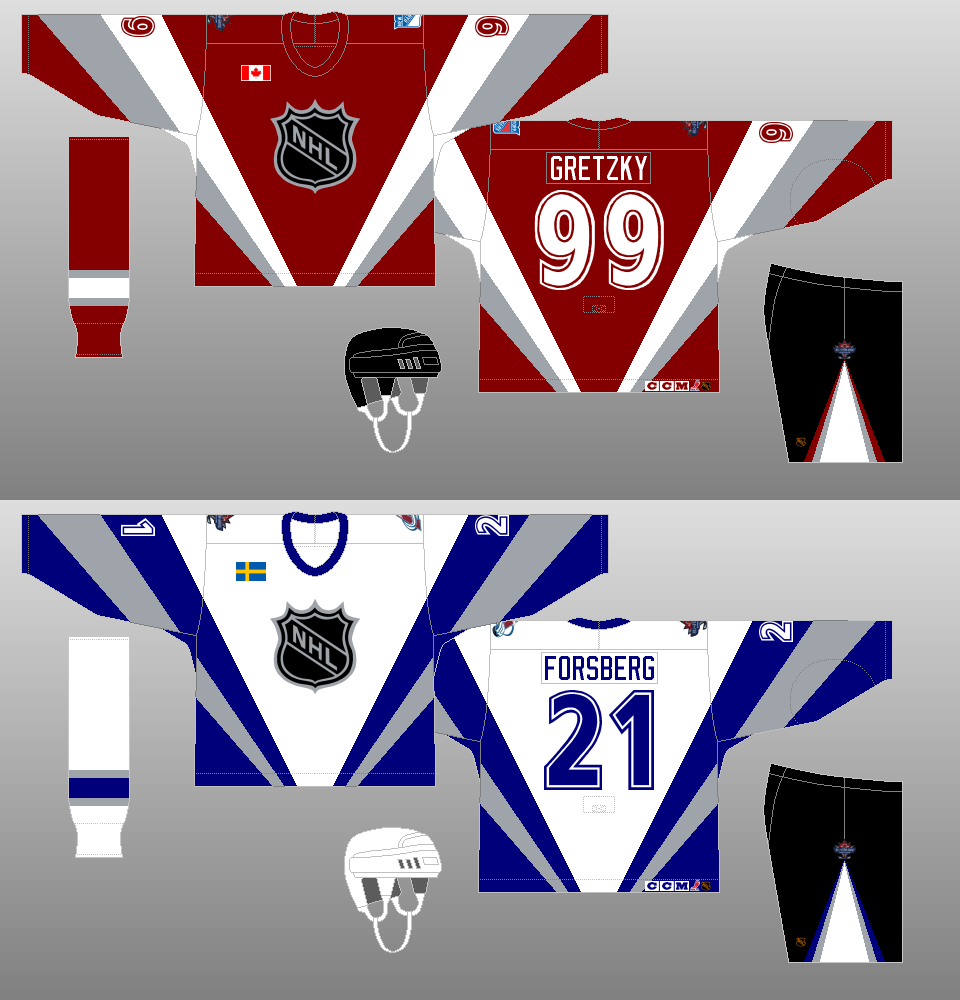 |
1998-99
The uniforms change again in the first year of the North America vs. World format. The flags of each player's home country is sewn on the front. |
|
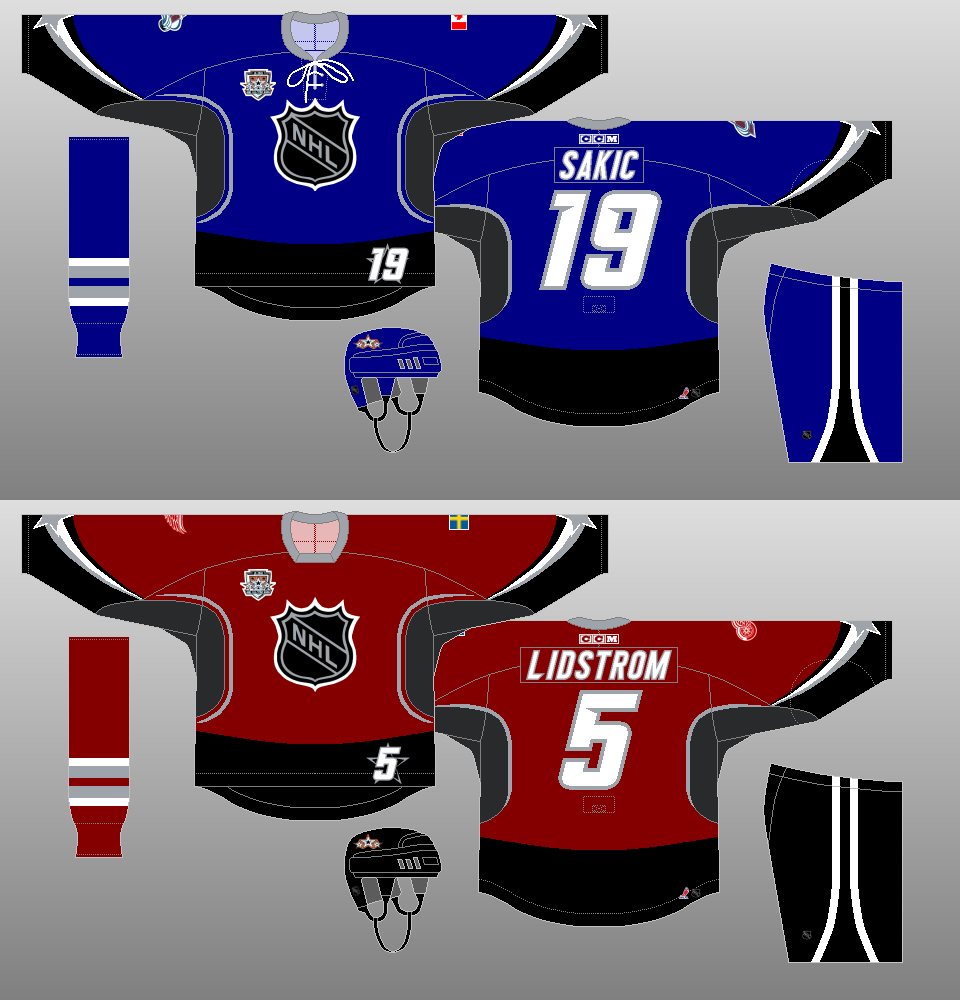 |
2002
Both teams again wear colored jerseys in the final year of the North America vs. World format. The colors are similar enough that at times it was difficult to distinguish the two teams. That problem would be rectified the following season. |
|
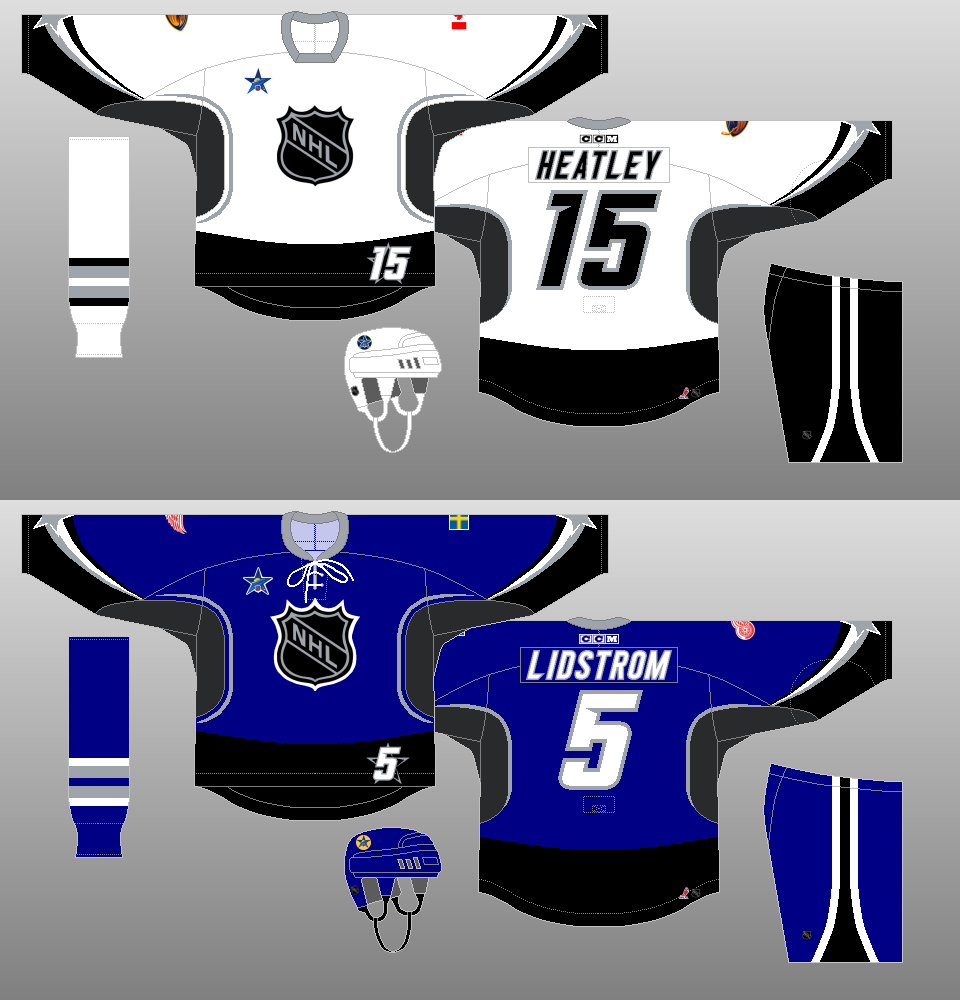 |
2003
The maroon jersey changes to white, which is worn by the Eastern Conference. The Western Conference wears the blue uniforms. |
|
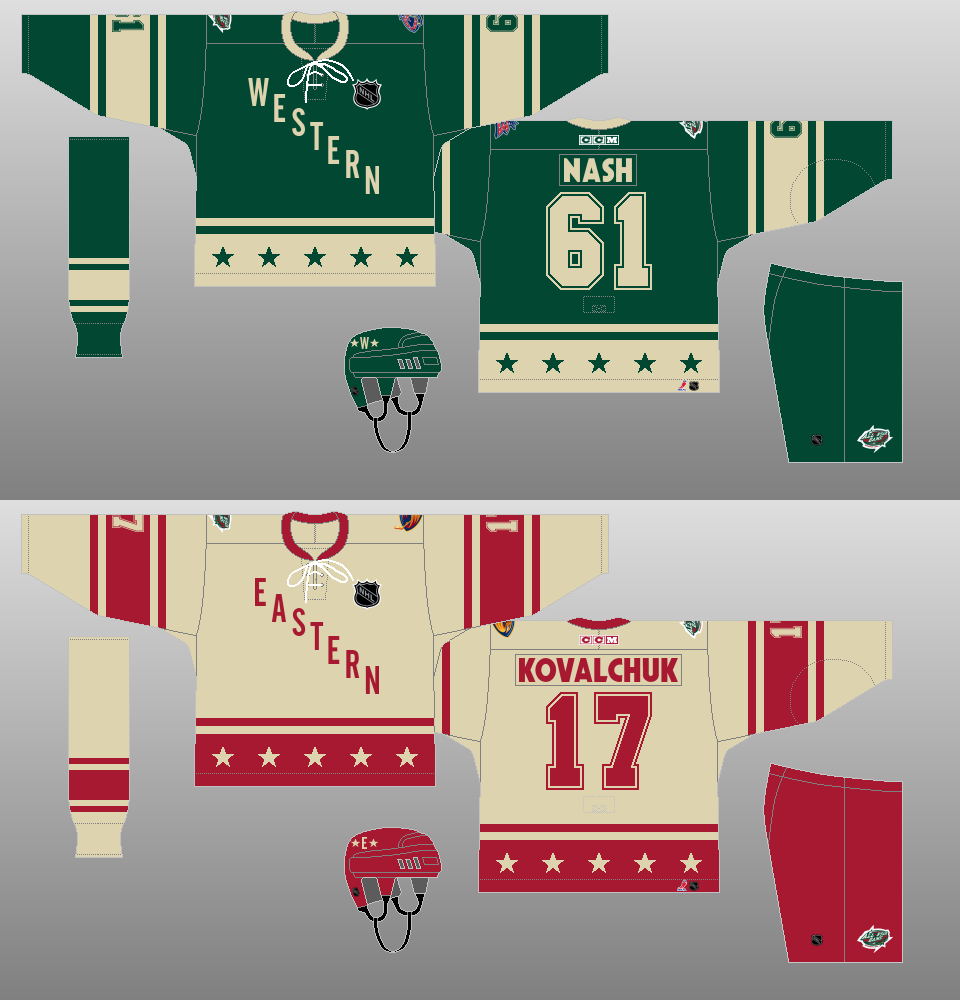 |
2004
The All-Star Game uniforms have a vintage feel to them for the 2004 All-Star Game in St. Paul, MN. |
|
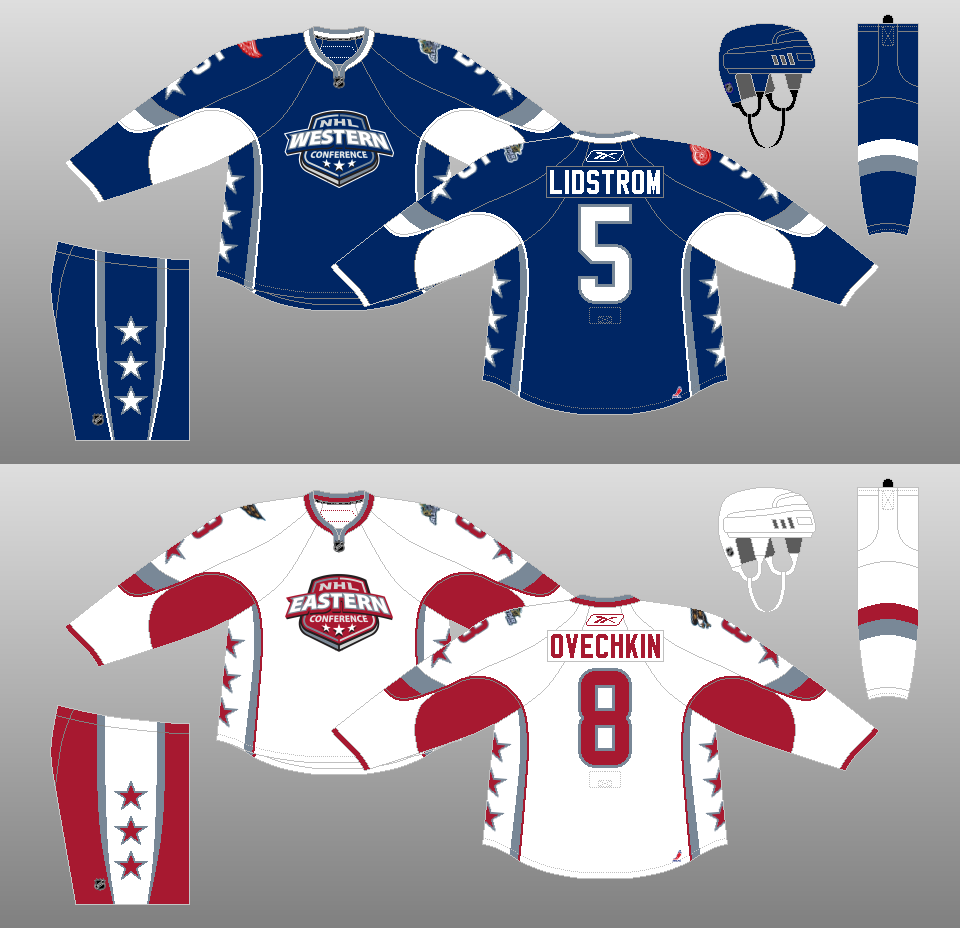 |
2007
Following a two-year absence, the All-Star Game returns in 2007 with the world premiere of the Reebok Edge uniform system. |
|
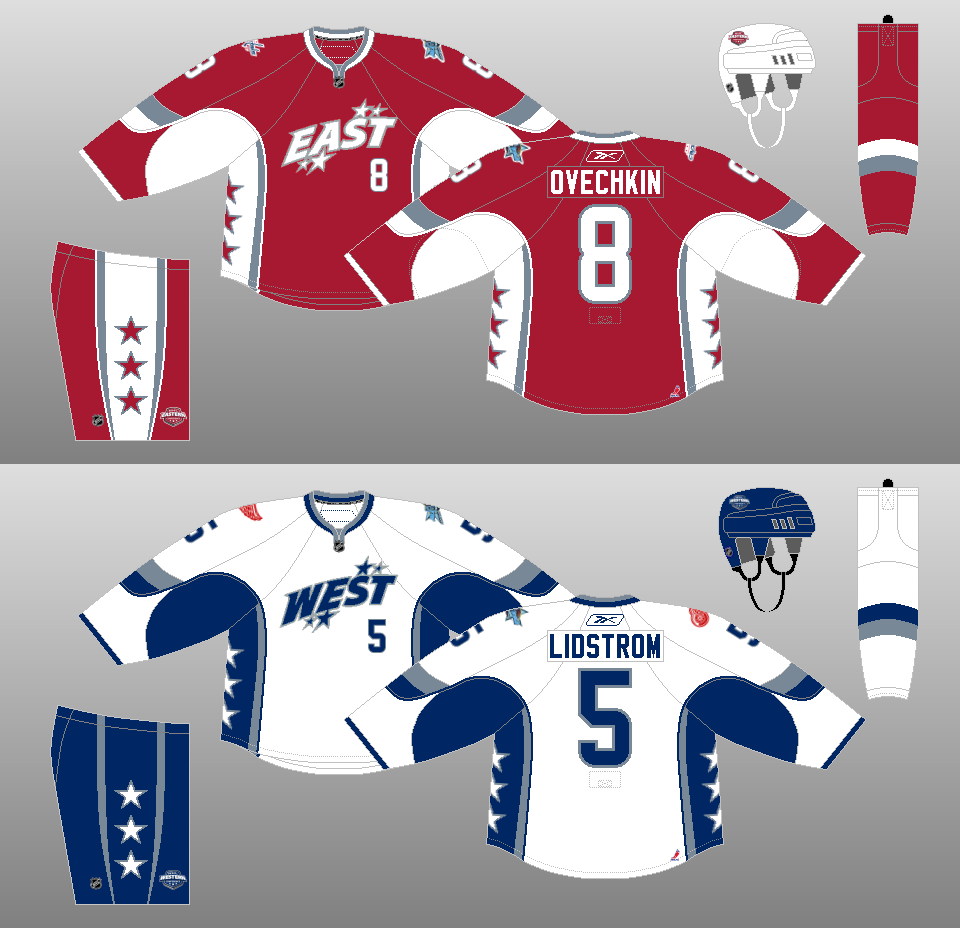 |
2008
The crests on the jerseys change. |
|
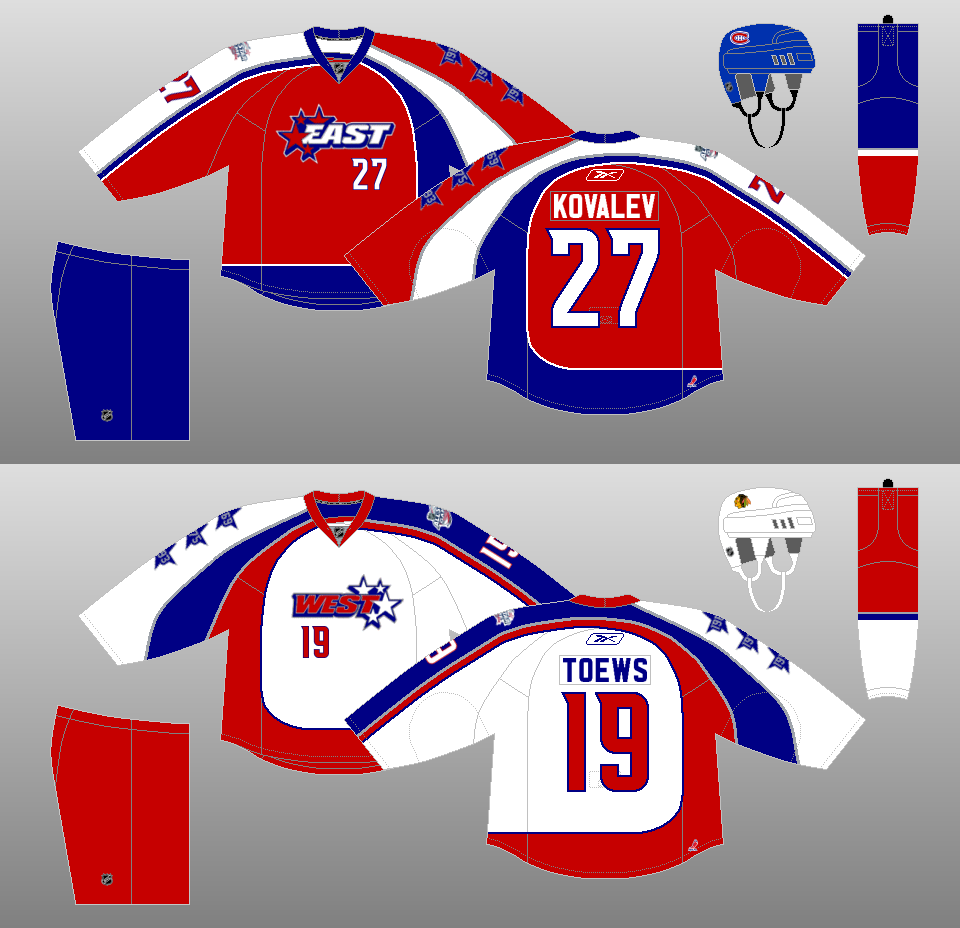 |
2009
The uniforms have a mirror effect for the 2009 All-Star Game -- the East's striping pattern is the reverse of the West's, and vice-versa. Note the three stars along the jersey-color sleeves on each jersey. Inside, they contain the three previous years that the Canadiens hosted the All-Star Game -- 1969, 1975 and 1993. The logo of the player's team appears on the helmets. |
|
 |
2011-12
A new design is introduced for the 2011 All-Star Game in Raleigh, North Carolina. Note the unique placement of the front numbers. Just in time for this redesign is a new game format, in which the team captains choose sides -- think of it as the most expensive pickup game in sports history. In 2011, the teams are dubbed Team Staal and Team Lidstrom. |
|
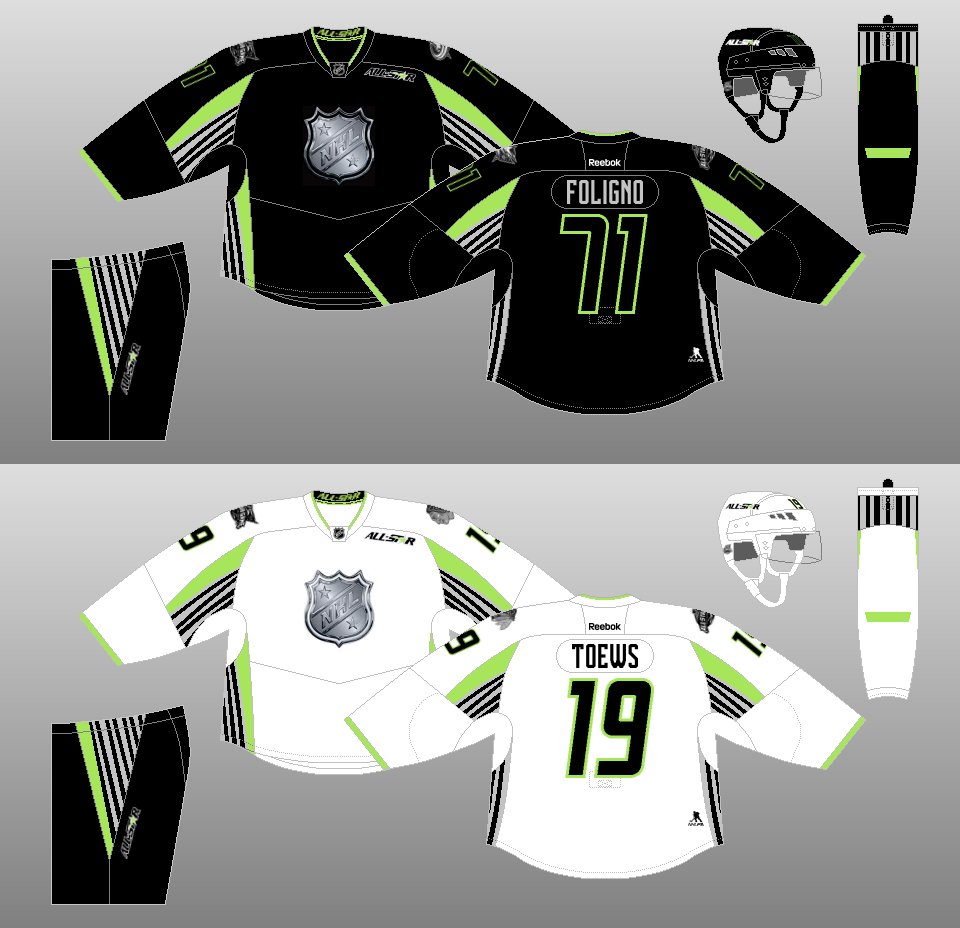 |
2015
The NHL incorporates neon green in its All-Star uniforms for the 2015 game. |
|
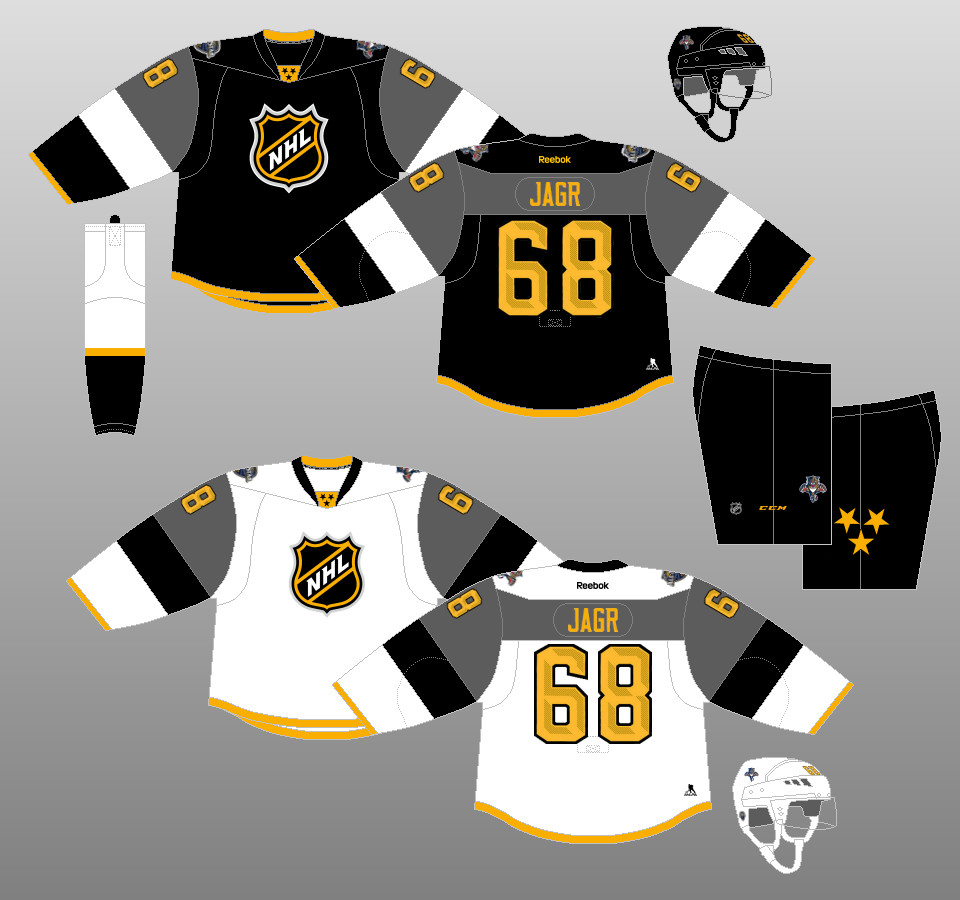 |
2016
For the 2016 game, the NHL institutes a four-team 3-on-3 tournament, with players representing their divisions. Despite four teams participating, there were only two jersey designs in the first year of the format, and all players on all teams were issued both dark and white jerseys. |
|
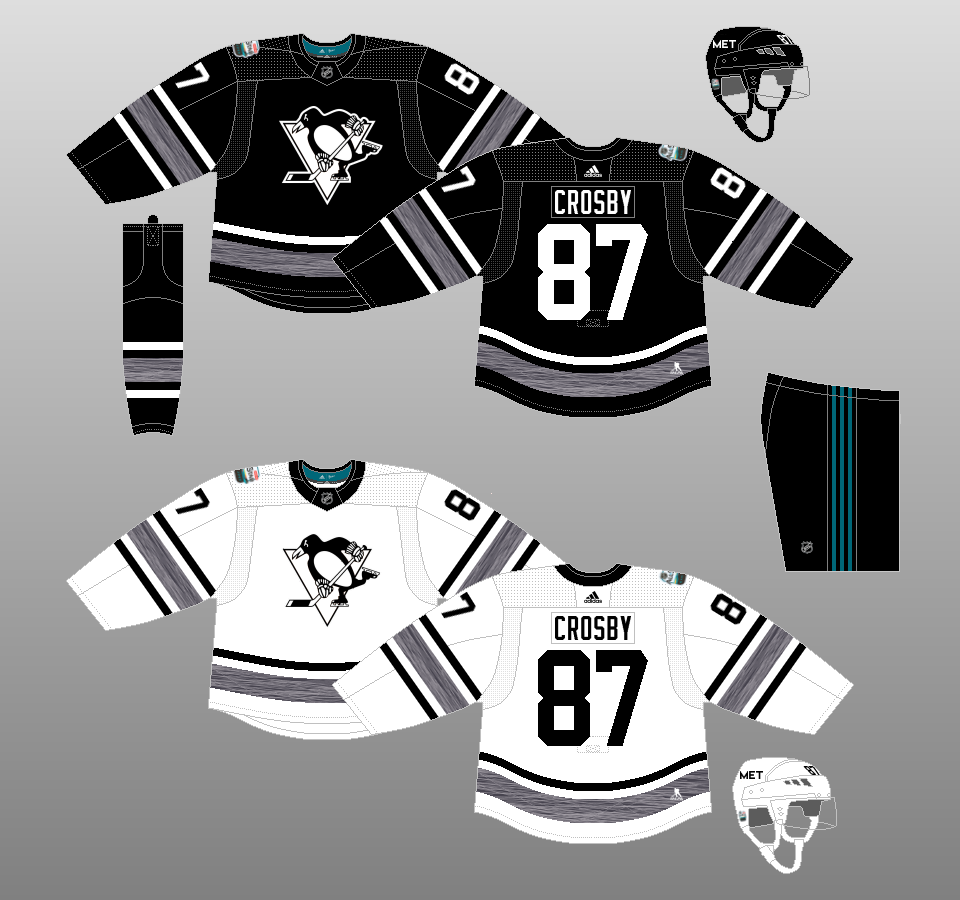 |
2019
For the 2019 tournament, Adidas teamed up with Parley for the Oceans to create jerseys made with upcycled marine plastic debris. The black and white color scheme is supposed to represent pucks and ice, respectively. The crests vary, with each player's team reflected. |
|
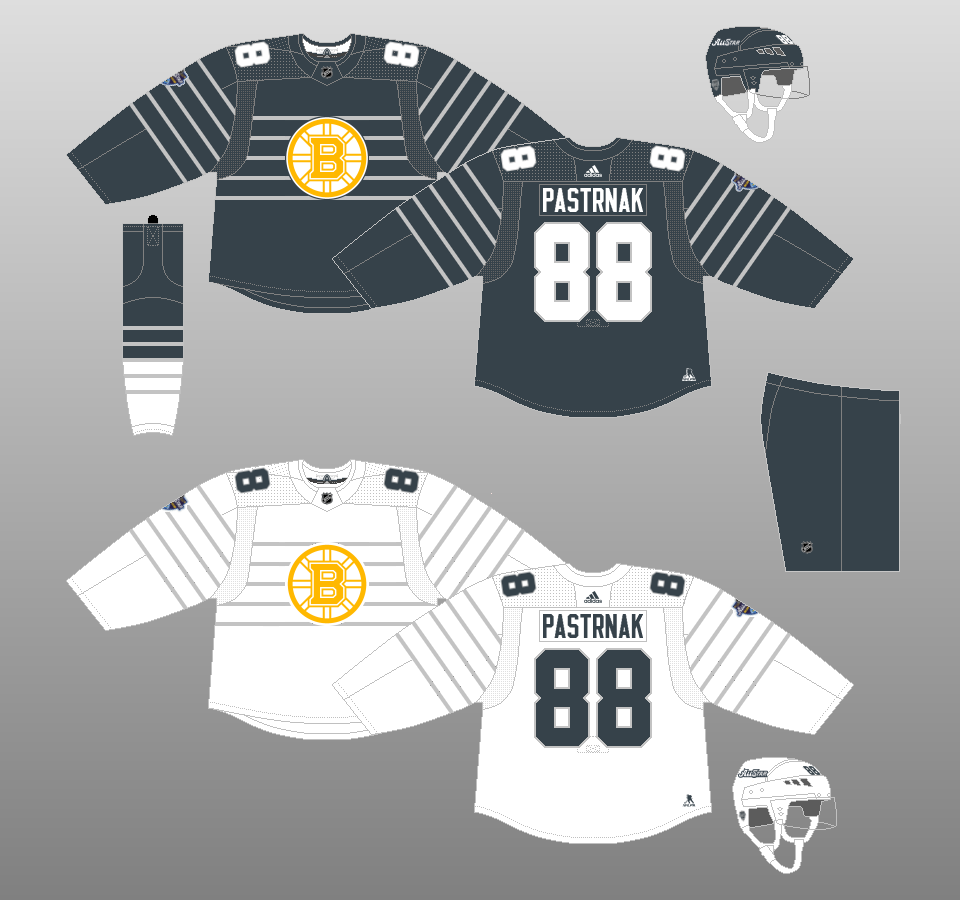 |
2020
For the 2020 tournament in St. Louis, the jerseys are dark gray and silver, with five stripes on the sleeves and the front of the jerseys to represent a music staff. All players on all four teams are issued the same uniforms, both gray and white, with the crests again varying based on each player's team. |
|
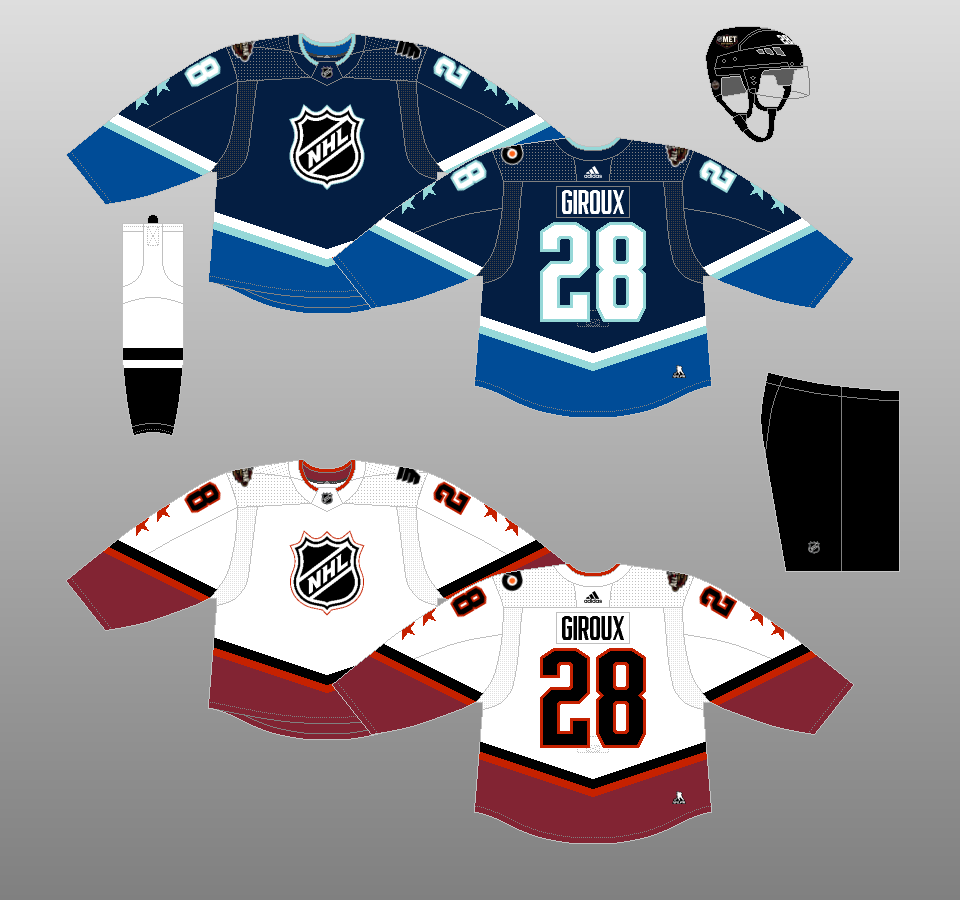 |
2022
When the All-Star tournament returned in 2022 following a pandemic-forced one-year hiatus, grayscale was out and colors were back in -- reds for one team and blues for the other, with varying shades of each. The format remains a four-team divisional tournament, so some players wore both uniforms for the event. |
|
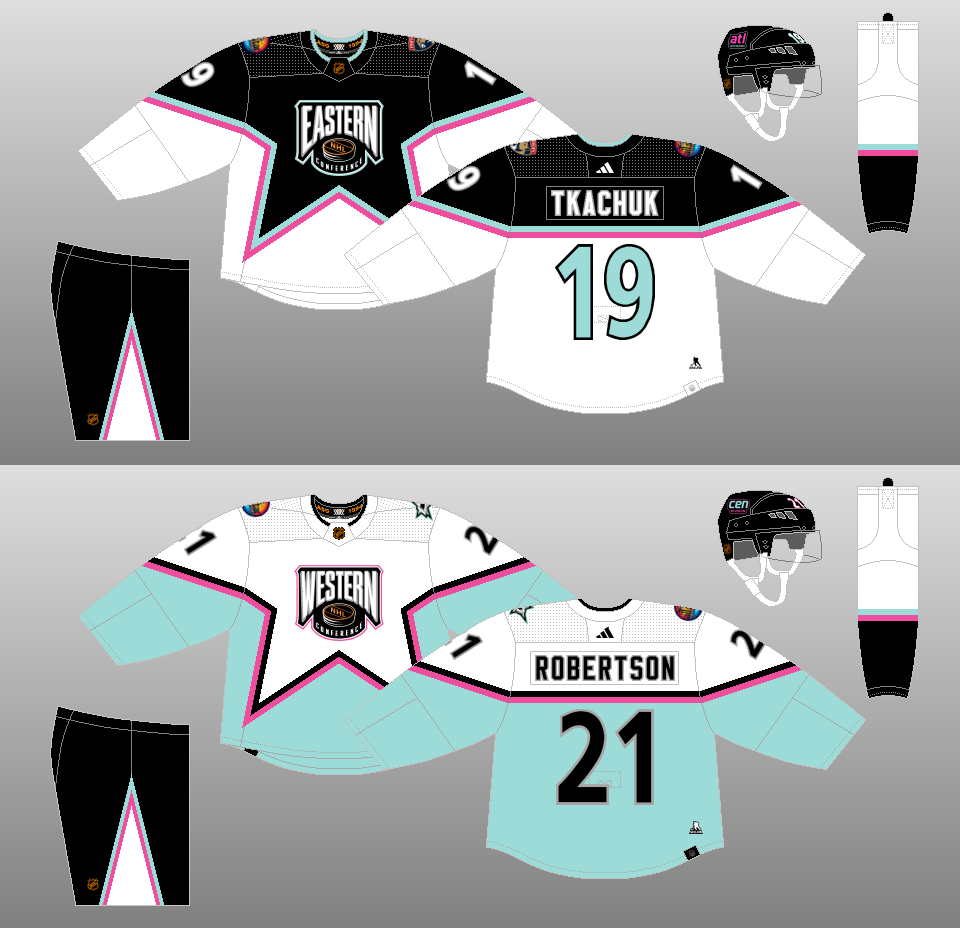 |
2023
The 2023 All-Star Tournament keeps with the Reverse Retro theme of the season and introduces an art deco take on the 1994-97 All-Star Game uniforms. Despite the Reverse Retro theme, the team logos on the left shoulder are the regular logos. A missed opportunity, in my humble opinion. |
|
 |
2024
The 2024 All-Star tournament features four jerseys designed in collaboration with Justin Bieber's Drew House fashion line. The 2024 tournament reinstitutes the All-Star draft that was used in 2011, 2012 and 2015. |
|



